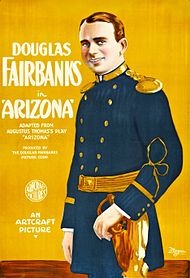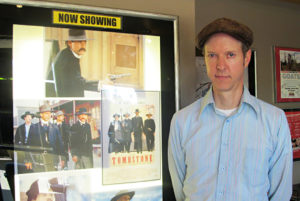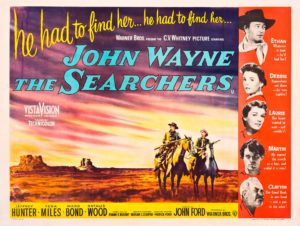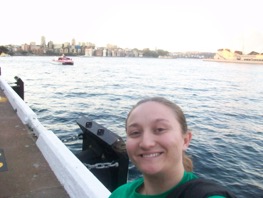By Amber White
Arizona Sonora News
Arizona used to be a hot spot for major movie production — until state film tax subsidies were stripped away in 2010, while other states began luring Hollywood with lavish come-ons.

Arizona — where movies have been made literally since the earliest days of the American cinema — still hasn’t reinstated film subsidies, though there have been moves in the legislature and elsewhere to do so. But the plot has thickened in recent years as states that diverted large amounts of tax money into movie production have started backing away amid intense competition by other states, including California, and as realization grows that Hollywood directors increasingly insist on a concept called “authenticity of place” — that is, shooting a movie in the actual place where it is supposed to be set, tax credit or not.
Louisiana had for years led the way in generous tax credits and other incentives that allowed boosters to call the state “Hollywood South,” but that initiative has gone, well, south. “The movie tax credit is completely broken,” J.P. Morrell, a state senator from New Orleans, told the Baton Rouge Advocate newspaper last April in a story about the sharp decline in major movie and television production in Louisiana.
Changes to the tax credit were one cause of the decline, but changes in attitudes about location shooting were another. After all, how many movies can they make about New Orleans? And how far is it, really, from a swamp in southern Louisiana to the Polo Lounge in Beverly Hills, a half-hour’s drive from the major studios’ sound stages?
But since the subject is movies and this is The Tombstone Epitaph, let’s talk about Tombstone, which has been the setting for dozens of movies since the days of silent films. Specifically, let’s talk about “Tombstone.” The movie, not the town.
“Tombstone,” the movie, was one major example of a major motion picture shot in Arizona during the heyday of the tax subsidies. The 1993 movie was shot all over Arizona, in places like Patagonia, Harshaw, Elgin, Babocomari Ranch, Mescal and the Empire Ranch in Sonoita.
But “Tombstone” was not shot in Tombstone.
Why not?

Tombstone Mayor Dusty Escapule shrugged off what others might say was a diss of Tombstone by the moviemakers. “I wasn’t the mayor then, so I can’t answer that,” Escapule said. “I was here, but I had nothing to do with it.”
Jeff Yanc, program director at Tucson’s Loft Cinema , had another explanation. “It’s an actual town where people live, so they can’t really close the town down to film a movie for months and months,” Yanc said.
Whatever, the tax incentives that encouraged productions like Tombstone in Arizona are not likely to be revived any time soon. The National Conference of State Legislatures claims only 37 states continue to have film incentive programs this year and many of them are restricting their requirements for “qualifying expenses, reeling-in per-project and annual program caps.”
“Nowadays, if you don’t offer a tax incentive, you don’t get the big budget films to come to your state,” said Rob Jensen, the studios entertainment and film manager at Old Tucson Studios in Tucson, which is a theme park devoted to the Old West with a 70-year tradition of Western moviemaking and television production.
Mike Kucharo, intermediate president of Arizona Film and Media Coalition, was one of the people to draft the original legislation with a senator from Tucson. He believes tax incentives really do work.
Arizona took elements from other states to offer a tax incentive. It went through legislation without any problems, but some of the elements taken were not modified. Senator Gabby Giffords proposed that the tax plan they came up with be limited to 5 years, which would expire in 2010, according to Kucharo.
They didn’t plan on the tax credit being a certain amount, so they had to make this work. The first year, nothing was spent or made in Arizona, Kucharo said. The plan was modified within the second year, which said one had to start production within a certain length of time and spend money in Arizona within 90 days of getting authorization to shoot a film under the terms.
“It was very successful in the second and third years,” Kucharo said. “There was a lot of money brought into the state on production. “The movie ‘Kingdom’, which was supposed to be shot in Iran or Irag, was shot here because of the tax incentives.”

“The Kingdom,” starring Jamie Foxx and Jennifer Garner, was an dramatic thriller about U.S. government agents investigating a bombing in the Middle East. It was shot in Mesa, Phoenix and Gilbert, along with other locations.
“Arizona in the past has probably been the most shot state outside of California,” Kucharo said. “It was the go-to place for movies going back years and years before the state was even a state. We can duplicate anything. I do believe we will come up with a program that satisfies everyone that won’t cost the state any money.”
It’s a struggle. “We’ve been trying to get a film office back because someone has to answer the phone,” Kucharo said. “If you want to find information about shooting in Arizona, you call the state film office. Right now, we don’t have a state film office, so nobody answers the phone and you are on your own.”
Smaller independent films are still shot in Arizona, but not the major studio films. Commercials and music videos are also filmed here. What we are really lacking are major feature films because of the tax incentive. A lot of producers go to New Mexico for filming even if their movies are set in Arizona.
Every year in August, the Loft does a Tucson birthday screening to mark the occasion when Arizona became a territory. This year, “Tombstone” was the feature, as a celebration of the faded days of moviemaking in Arizona, if not in Tombstone itself.
“It’s not just the people making films that are making money. Carpenters, restaurants and hotels benefit when consumers come to town for the films,” Yanc said. “I think the cinematic legacy is important to try and bring film-making back to Arizona in general. Tucson used to be a tourist spot for people who would come to see where they shot all the movies. And I don’t think that’s really the reputation of Tucson anymore, so it would be really great if big productions started coming back.”
Yanc said it’s hard if you live in Arizona and you see a lot of movies constantly pretending to be set here, but they weren’t shot here. He said he loved the movie “Tombstone” but he also really likes a non-western film, “Alice Doesn’t Live Here Anymore,” a 1974 movie shot in many locations throughout Tucson.
“It doesn’t make any sense as to why film-making shouldn’t be happening in the state of Arizona where you got sunshine the majority of the year and almost every kind of landscape there is except the ocean,” Jensen said.
Download high resolution images here.
 Amber White was born and raised in Tucson and spends most of her free time indoors playing with her animals or watching reruns of her favorite TV shows. She wants to find a way to combine her passions for writing and animals after graduation.
Amber White was born and raised in Tucson and spends most of her free time indoors playing with her animals or watching reruns of her favorite TV shows. She wants to find a way to combine her passions for writing and animals after graduation.




